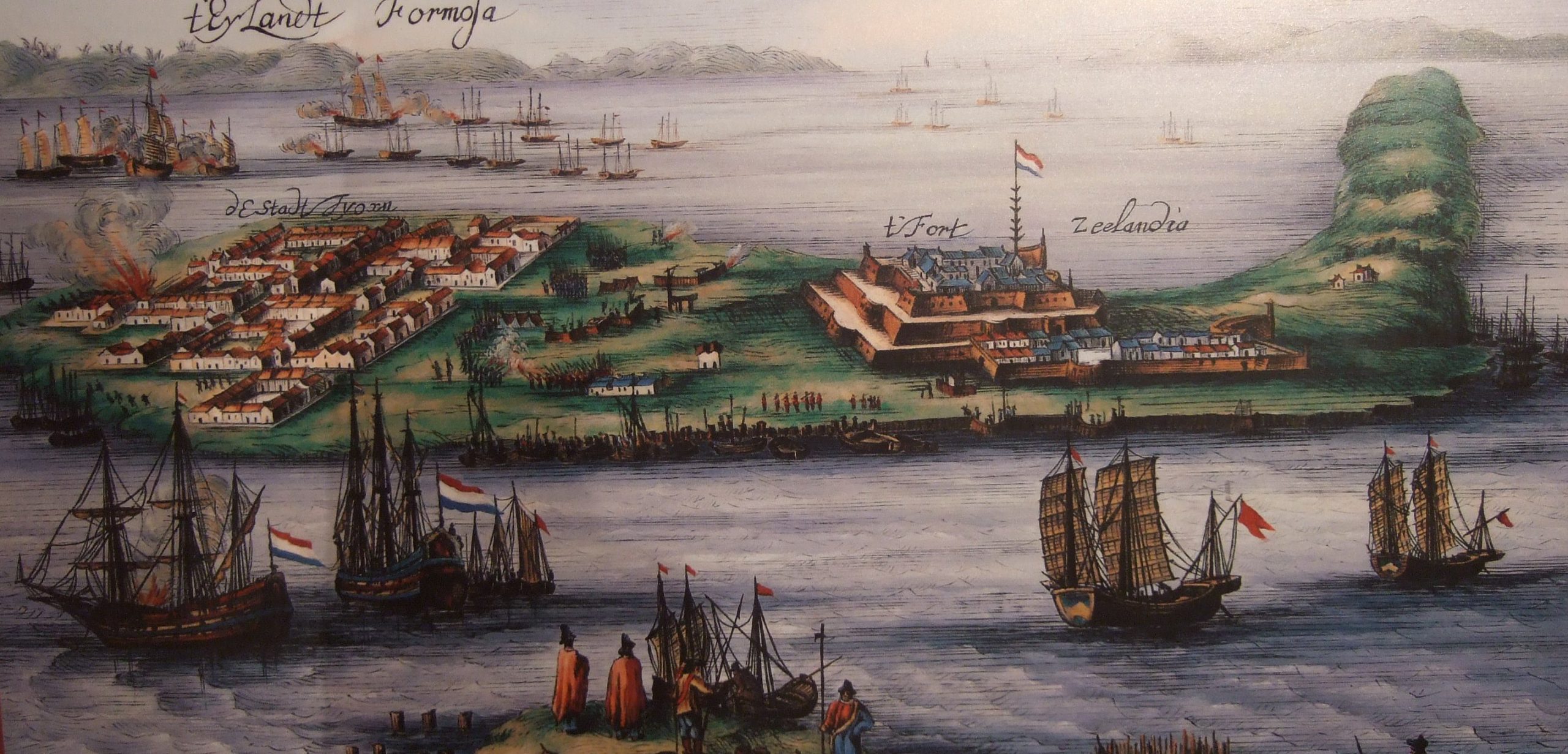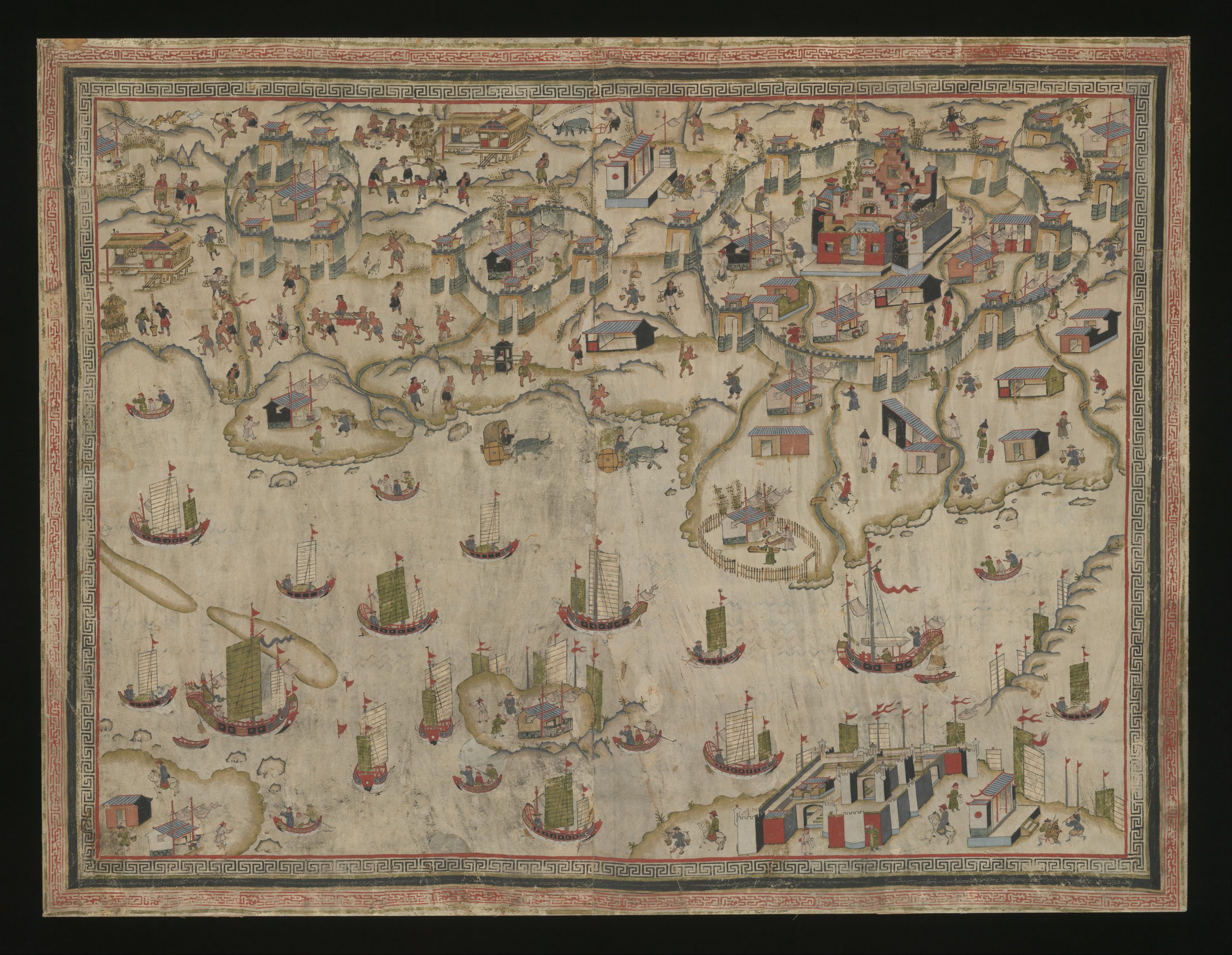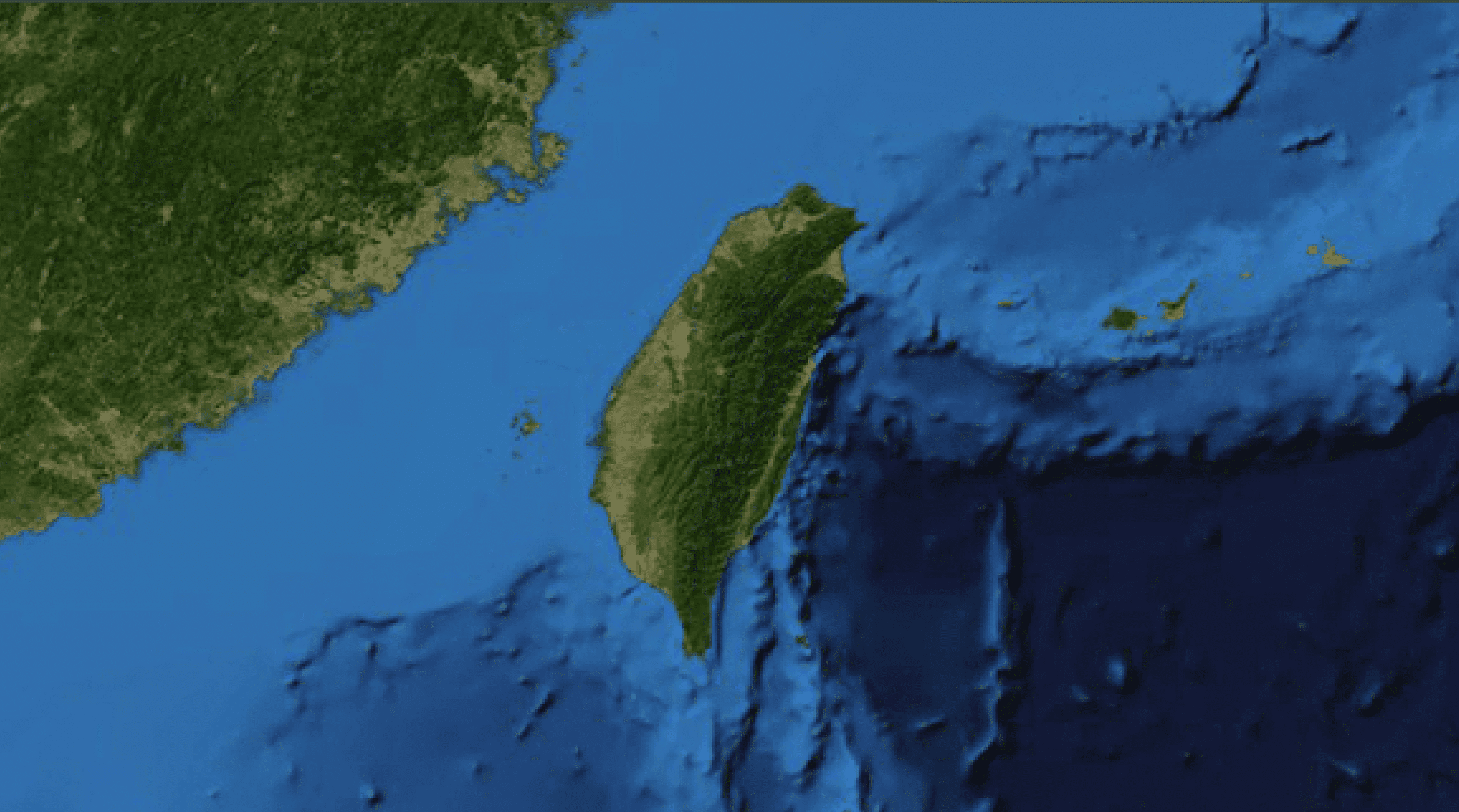Dutch control: Fort Zeelandia, 1622-1662
Dutch control: Fort Provintia, 1626-1642
Spanish control: Fort San Salvador, 1653-1662
Chinese control: 1683-1895
Japanese control: 1895-1945
Tea fields in Alishan-Taiwan
Rich in natural resources and strategically located at the nexus of coastal China, Japan's southern archipelago, and the northern reach of southeast Asia, Taiwan has historically attracted the attention of outside powers. Whether eastern or western, these powers often met with strong resistance by Taiwan's inhabitants, but over time were sometimes integrated into their communities, or coexisted with them.
Image of Fort Zeelandia
The Dutch established a trading base on a small peninsula off the coast of Taiwan in 1622, and after arming and provisioning the base, renamed it Fort Zeelandia in 1624. The Dutch sought to colonize Taiwan due to its prime location along the busy sea routes between East Asia and Southeast Asia, as well as its fertile and resource-rich land.
Forts Zeelandia and Provintia and the City of Tainan
Saccam was destroyed by the Dutch in 1652 during a Chinese revolt against Dutch rule, and the Dutch replaced it with Fort Provintia. When Koxinga invaded Taiwan in 1661, Fort Provintia was the first location he struck at. Once Koxinga defeated the Dutch, he established the capital of his Kingdom of Tungning here.
View of Kelangh (Keelung)
Spanish colonization of the northern tip of Taiwan in 1626 was prompted by a number of factors, including their concerns that the Dutch would supplant their monopoly over trade with China, piracy threats off the Chinese coast, and deteriorating trade relations with Japan (Tsai, 2016). The Spanish first constructed a fort that they named San Salvador, on the island at the mouth of Keelung harbor. The Spanish then built a fortress in 1628 called Santo Domingo near present-day Danshui. Spanish colonists (mostly ethnic Filipinos), military personnel, and Catholic friars settled the area, but by 1642 were forced to surrender to invading Dutch forces.
"A scene of the Taiwanese campaign" Crossing the ocean and a triumphant return
After Zheng Jing's death and his own son's defeat by Qing forces, the Qing Dynasty reclaimed Taiwan as a part of its territory from Ming loyalist Zheng's regime and forced Taiwan to submit to Manchu rule. Taiwan was initially made part of Fujian territory, and in 1887, was officially made a province of China. Taiwan was initially reluctantly administered by China, “only to prevent it from becoming a pirate base,” and was often where “low-paid, demoted, or third-rate” government officials were sent. (Manthorpe, 2008). The Hoklo and Hakka who had migrated to Taiwan were treated as an "underclass" by ruling Qing elites, with heavy taxation, corruption, bribery, restrictions on immigration, land use, and civil service exams, and rule by martial law. (Manthorpe, 2008). Triad secret societies such as the San Ho Hui, formed in 1662, sprang up to resist Qing rule in Taiwan, but it would ultimately rest on outside powers to topple Qing control of Taiwan.
Painting of Japanese entering the city of Taipei in 1895 after the Treaty of Shimonoseki
Japan's modernization, militarization, and industrialization with the Meiji Restoration of 1868 was soon followed by a military expedition to Taiwan in 1874, intended to exhibit Japan's strength and expansionist capabilities. In 1895, China, weakened and impoverished due to its losses to Great Britain in the Opium Wars and internal unrest, lost the Sino-Japanese war and ceded control of Taiwan to powerful, imperialist Japan with the Treaty of Shimonoseki.
Image of Fort Zeelandia
The Dutch established a trading base on a small peninsula off the coast of Taiwan in 1622, and after arming and provisioning the base, renamed it Fort Zeelandia in 1624. The Dutch sought to colonize Taiwan due to its prime location along the busy sea routes between East Asia and Southeast Asia, as well as its fertile and resource-rich land.
Image of Fort Zeelandia
The Dutch established a trading base on a small peninsula off the coast of Taiwan in 1622, and after arming and provisioning the base, renamed it Fort Zeelandia in 1624. The Dutch sought to colonize Taiwan due to its prime location along the busy sea routes between East Asia and Southeast Asia, as well as its fertile and resoure-rich land.
Forts Zeelandia and Provintia and the City of Tainan
Saccam was destroyed by the Dutch in 1652 during a Chinese revolt against Dutch rule, and the Dutch replaced it with Fort Provintia. When Koxinga invaded Taiwan in 1661, Fort Provintia was the first location he struck at. Once Koxinga defeated the Dutch, he established the capital of his Kingdom of Tungning here.
"A scene of the Taiwanese campaign" Crossing the ocean and a triumphant return
After Zheng Jing's death and his own son's defeat by Qing forces, the Qing Dynasty forced Taiwan to submit to Manchu rule and made Taiwan part of Fujian territory. (In 1887, Taiwan was officially made a province of China.) Taiwan was relegated by China as post of "last resort" for Chinese government officials, while at the same time over 100,000 Chinese living in Taiwan were forced to return to the mainland. Taiwan struggled in a constant state of unrest in these years, in which smuggling and illegal immigration to the island flourished due to exploitation by outsiders. The Taiwanese were treated as an "underclass" by the ruling Chinese elite, with heavy taxation, restrictions on immigration, land use, and civil service exams, and rule by martial law. (Manthorpe, 2008).
Painting of Japanese entering the city of Taipei in 1895 after the Treaty of Shimonoseki
Japan's modernization, militarization, and industrialization with the Meiji Restoration of 1868 was soon followed by a military expedition to Taiwan in 1874, intended to exhibit Japan's strength and expansionist capabilities. In 1895, China, weakened and impoverished due to its losses to Great Britain in the Opium Wars and internal unrest, lost the Sino-Japanese war and ceded control of Taiwan to powerful, imperialist Japan with the Treaty of Shimonoseki.

























